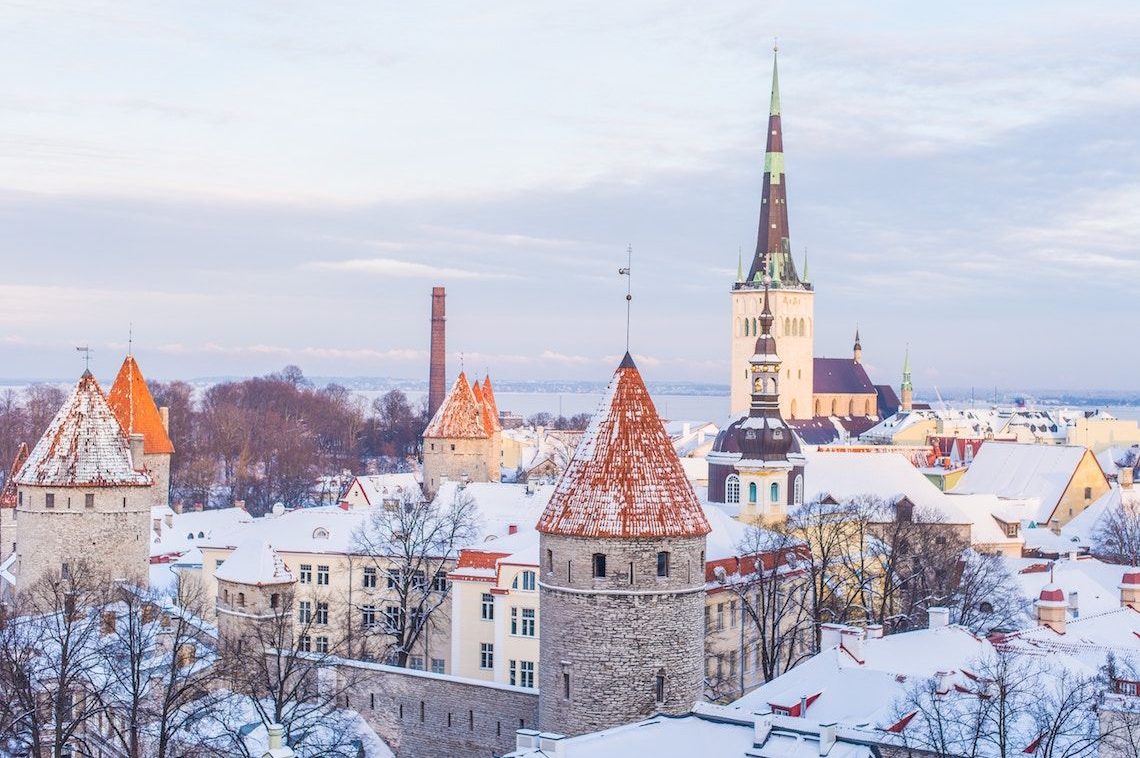Export to Europe – guide to entering the European market
Europe market – the European Union (EU), alongside the United States and China, comprise the three largest economies in the world, accounting for roughly a fifth of global GDP.

The European Single Market – the internal economic space of the EU – comprises more than 500 million consumers and prides itself on being the most open market to developing countries. As such, for any businesses based outside of the EU, expanding to Europe can be an extremely rewarding endeavour.
In this article, we look at the main regions and sub-regions of the EU and briefly examine its general legal framework, including the EU’s policy of multilingualism and the importance of national languages. We also give 10 simple tips for establishing a successful business in Europe and discuss how to choose a translation agency when doing business there.
1. What are the main European regions?
Europe can be divided into various regions in many different ways, whether by geographical, cultural or other grounds. However, for business analytical purposes, in this article we will be giving slightly more weight to economic and cultural factors than geographical ones. Therefore, the following classification may differ somewhat from traditional geographical divisions. The four major regions of Europe, which we will explore further below, are:
- Northern Europe
- Central and Eastern Europe
- Southern Europe
- Western Europe
Within these regions, there are many similarities in terms of economic development as well as culture and language, which are a good starting point for determining where to start and expand your business.
1.1 Northern Europe
Northern Europe consists of the Nordic countries of Denmark, Finland, Iceland, Norway and Sweden, with a combined population of roughly 26.5 million people. Although Norway and Iceland are not technically part of the EU, they are nonetheless members of the European Economic Area.
These countries are among the most highly developed and equal societies in Europe, with large economies and exceptionally high standards of living. Aside from Finland, their national languages all belong to the Germanic language family and are largely mutually comprehensible. The Nordic countries place a high value on gender equality, social cohesion and welfare.
1.2 Central and Eastern Europe (CEE)
Central and Eastern Europe is a large region of former socialist states that includes the following EU members: Estonia, Latvia, Lithuania, Poland, Czech Republic, Slovakia, Hungary, Slovenia, Croatia, Romania and Bulgaria.
Together, these 11 countries have a population of around 100 million. Most (though not all) local languages within this region belong to the Slavic language family, although even these are more distinct from each other than is the case in the Nordics.
Central and Eastern Europe (CEE) is the least developed region of Europe, although with marked differences between the individual countries. However, as we discuss below, this presents its own opportunities in the context of the EU.
Several CEE countries have formed political and economic alliances amongst themselves, which provide a somewhat more integrated business environment in the respective sub-regions. These include the Baltic States (Estonia, Latvia and Lithuania) and the Visegrád Group (Czech Republic, Hungary, Poland and Slovakia).
1.3 Southern Europe
In terms of economic and cultural similarities, within the borders of the EU, Southern Europe can be defined as consisting of Mediterranean Europe (Greece, Cyprus, Malta, Italy and Spain) and Portugal. These six countries have a combined population of approximately 130 million and, aside from Greece and Cyprus, all speak languages belonging to the Romance language family.
Southern Europe is somewhat more developed than Central and Eastern Europe, although not significantly more so. This region was hit especially hard by the economic crisis of the late 2000s and suffers from relatively high unemployment to this day.
1.4 Western Europe
Western Europe can be said to consist of the following EU member states: Austria, Germany, the Netherlands, Luxembourg, Belgium, France, the United Kingdom, and Ireland. Of non-EU members, Switzerland and Liechtenstein, both of which participate in the European Single Market, can also be considered Western European countries. These 10 states have a combined population of around 265 million and primarily speak Romance and Germanic languages, with the most common being English, German and French.
Western Europe is one of the wealthiest regions of the world: Germany is Europe’s largest economy, while Luxembourg holds the title for the highest GDP per capita in the world and Switzerland has the world’s highest average wage. However, this said, the future of the United Kingdom in the EU is uncertain, as it is planning to leave the Union within the foreseeable future.
Sub-regions and politico-economic alliances within this region include the German-speaking DACH countries (also known as GAS – Germany, Austria, Switzerland) and the Benelux Union (Belgium, Netherlands, Luxembourg).
2. How does the European Single Market function?
The European Single Market is the internal market of the EU, which links together and regulates the economies of the 28 EU member states. Through the European Economic Area and bilateral treaties, limited access to this common market is also granted to Iceland, Norway, Liechtenstein and Switzerland.
The aim of the Single Market is to facilitate business and integration as well as to protect the health of consumers and the environment. According to the European Commission, the EU Single Market comprises 21 million small and medium-sized enterprises (SMEs).
2.1 The four freedoms
The Single Market is founded on the so-called “four freedoms”, namely:
- The free movement of goods: All members of the EU enforce a common customs policy towards non-EU countries with no internal customs duties. This means that once a set of goods has entered the EU, no additional customs taxes are levied when moving them between EU member states.
- The free movement of capital: EU residents and businesses are granted full access to all banking, loan and insurance services offered within the Union, including the purchasing of company shares, real estate and investment.
- The freedom to establish and provide services: EU residents and businesses may set up a business and provide services freely across the Union without discriminatory restrictions (i.e. on the same terms as citizens of each particular member state).
- The free movement of persons: EU residents may move freely within the Union and live, work or study in any member state.
2.2 Harmonised rules
Harmonised rules are regulations that apply to certain products across the entire Single Market, including health, safety and environmental protection requirements. Before placing any product on the market, the manufacturer must verify and demonstrate that it meets all such applicable requirements.
This verification process is known as a conformity assessment and consists of testing, inspecting and certifying the respective product. At the end of this assessment, the manufacturer must draw up a certificate of conformity and affix a CE marking to the product (if applicable) as an indicator of conformity. For some products, the conformity assessment must be performed by an external conformity assessment body. When performing the assessment, it can be helpful to refer to the EU’s harmonised standards.
2.3 Multilingualism in the EU
As the EU consists of 28 separate nation states, clear communication is vital for its proper functioning. While English, German and French are the primary working languages of EU institutions, the Union has taken a stance of supporting linguistic diversity, and thus currently has a total of 24 official languages. All of the most important EU documents and legislation are translated into each of these languages.
This also means that the labelling, safety materials and user manuals must be translated into the languages of the countries in which products are put on the market, so that they are understandable to all intended consumers. In most EU member states, this also includes the declaration of conformity.
Therefore, choosing a professional translation service provider when doing business in Europe is extremely important in ensuring that nothing gets lost in translation and your consumers fully understand how to properly use your product.
3. How can you guarantee success in the European market?
Based on the above, here are 10 simple guidelines to follow in order to ensure success when entering the European market.
1. Choose a region
The EU is a vast and diverse market and it can be tempting to immediately try to make use of its full potential. However, it is always best to start small, especially if this is your first attempt at international business.
Choosing a single region or even a single country in which to start can help avoid having to juggle the requirements of multiple national legal systems as well as the differing expectations of consumers from a variety of cultural spaces. Likewise, confining your activities to a single language area or one of the related languages can help minimise international communication issues, especially with the help of a dedicated translation provider.
When making your selection, consider any existing contacts in Europe that can help you gain a faster foothold as well as provide suggestions on the markets in which your product is most needed.
2. Research your market
This step ties into the previous one to some extent, and consists of analysing both your existing competition as well as the suitability and potential of your product on that market. Highly innovative products and services would probably yield the best returns on larger markets, such as Germany or France. If your product is less unique, you might find better luck in less developed markets, which are not as saturated and where competition is generally lower.
Also, keep in mind that the EU directs a third (!) of its annual budget towards developing its poorer regions. Therefore, establishing yourself in Eastern Europe, for example, might seem less attractive at first glance, but the region is growing rapidly, which could prove highly beneficial in the long run, especially as starting costs are lower and you might not have to work as hard to stand out from your competition.
5. Be aware of your local image
This involves taking a more personal approach to your target market, including adapting to the local language and culture. Your enterprise might have foreign roots and you might wish to do things the way you do at home, but this way you risk coming across as disrespectful. The saying “When in Rome, do as the Romans do” is very much alive in Europe.
In addition, as discussed above, communicating in the local languages is vital. It might be tempting to look at the EU as a unified federation and approach it with the global lingua franca – English – but outside of the UK and Ireland, this will not get you far. European nations are still highly nationalistic and national languages are a central part of the identity of most Europeans.
To help effectively localise and adapt your communications and marketing materials to your target market, it is a good idea to find a professional translation agency that is familiar with the current marketing trends and the peculiarities of the local business environment.
6. Consider the latest trends
There are two things that European consumers value above all: Innovation and progressiveness. Consider the latest global and social problems as well as recent technological developments. Is there any way in which your product or service could solve these issues or take advantage of these new opportunities?
For example, due to growing concerns about global warming, any company that can demonstrate their commitment to sustainability and eco-friendliness will have a clear edge over their competitors in Europe. If your product is biodegradable or easily recyclable, do not hesitate to make this known to your customers. And if it is not, perhaps it is worth going the extra mile to gain that edge.
7. Establish a web presence
According to Eurostat, at least 85% of European households have Internet access and seeking information about products or services is the second most prevalent online activity after exchanging e-mails across all age groups in Europe.
E-commerce and online stores are transforming global business and the EU has even begun work on extending its common market to the virtual realm by creating a Digital Single Market.
If you do not have an online presence in the form of a website or a social media account, you are putting yourself at a great disadvantage. It is important that your customers can find you, and the Internet has become the best place to do so. Running a website and conducting sales/advertising online are also much cheaper and efficient than maintaining a traditional bricks-and-mortar store and renting advertising spaces, as well as giving you extra reach to a truly global clientele.
8. Follow EU regulations
As mentioned above, products on the European market are strictly regulated through various health and safety standards. Depending on your area of activity, in many cases you will be expected to prove compliance with EU legislation, e.g. by presenting technical files, declarations of conformity, translated materials, etc. Customs officials and government inspectors routinely check these and thus doing things by the book from the start will save you from a great deal of headaches later on.
9. Focus on quality
Because of the aforementioned high standards and regulations imposed within the EU, European citizens have come to expect quality and precision. Therefore, before you make your grand entrance to the Single Market, you should make sure that you can provide a consistent and well-developed product or service – otherwise, you may end up irreversibly tarnishing your reputation.
Do a test run of everything and, if possible, implement a quality management system. If you can regularly meet your customers’ needs and expectations, you should have no trouble getting repeat business.
10. Think long term
Establishing your business in a foreign market can be a trying experience and will take time. There is much to learn and expecting immediate success and not finding it can make you question your decision to venture into the wider world in the first place.
Plan for the long term and be prepared to learn from your mistakes – there will be many. However, if you can accept this fact and stand firm, the rewards will be at least as plentiful. Show your customers and partners that you have a clear vision and will not jump ship at the first sign of trouble and you will already be well on your way to success.
4. How should you choose a translation agency for doing business in Europe?
As already mentioned, the linguistic diversity within the EU often makes using translation services a necessary part of doing international business in Europe. In order to avoid mistranslations and ensure your public communications go as smoothly as possible, it is, of course, best to turn to the professionals. Here is what you should consider when looking for a language service provider (LSP).
1. Location
If you are only doing business in a single European region or country that does not necessarily mean that you have to choose a translation agency from within that same territory. That is the magic of the EU: Borders are no longer barriers.
For example, if you need your English language texts translated into Finnish, Swedish or Norwegian, you can probably also find professional linguists fluent in those languages in neighbouring countries, such as the Baltics. The Nordic states are high-income countries and you will likely be able to receive the same quality service for a significantly lower price if you shop around in Estonia, Latvia and Lithuania, which have close ties with their Nordic neighbours and rank highly for English proficiency – especially Estonia.
2. Infrastructure and translation software
Before hiring any professional, it is probably a good idea to check if they have the right tools for the job. If you need frequent translations and/or your materials are of a repetitive nature, translation software is a must, as this helps keep terminology consistent, speeds up the translation process and enables discounts on repeat segments, which are retained in translation memories for instant recovery in the future.
Also, make sure that your translation provider can actually work with your required file formats. Most major translation applications are fairly versatile in this regard and can handle all of the most common formats, so if they have this covered, you are probably good to go. However, it never hurts to check.
3. Industry experience
If the texts you are dealing with are highly specific or require technical translation, even trained linguists may find themselves in over their heads. In order to avoid mistranslations and missed deadlines, ask potential translation providers about their previous experience with texts from your field.
You can also find information about this by looking at their client references. If they have previously worked with your partners or competitors, for example, they can probably handle your requests too, and possibly even provide a better service thanks to that experience.
4. A complete and dedicated team
If you require regular translation, you need a dedicated team. This means that your requests are always handled by a single project manager and language team. This helps avoid having to explain your needs over and over again, ensures that your LSP fully understands the nuances of your projects, and guarantees absolute terminological and stylistic consistency, which is something translation software and memories alone could never truly provide.
A complete translation team should consist of 2-3 professionals: A translator, an editor and, optionally, a final reviewer/proofreader. Any less than this and you risk errors slipping in (yes, even professionals make mistakes). However, any more than this, and, as they say: “Too many cooks spoil the broth”. A bloated team can drive up costs and completion times as well as lead to a situation where no one is willing to take responsibility for potential mishaps.
5. Confidentiality and security
In many fields, safeguarding the information entrusted to external partners, such as language companies, is essential. In competitive international business, for example, the deliberate or accidental disclosure of delicate information can have serious consequences.
If you happen to work in such a field, look for a translation agency that is willing to sign non-disclosure agreements (NDAs). This serves as insurance for guarding your business secrets and is a further sign that you are dealing with professionals.
6. Additional services and a personalised approach
To see if a translation service provider really understands the needs of its customers and the nuances of each field, take a look at the additional services they offer.
For example, if you can find SEO editing on this list, it is a clear sign that they are familiar with modern marketing techniques and will know what to pay attention to when handling such texts even when you might not have ordered that particular service.
Moreover, some businesses treat the services they offer as just that: a business. This means that they churn out huge volumes of texts each day by simply translating the words in front of them without ever really thinking about your needs or the purpose of your texts.
Look for signs that your translation agency is passionate about what they do. For example, this could involve a unique website, enthusiastic and personal e-mails instead of template-based replies, translations that do not always follow the exact word order of the source texts, but are instead adapted to target language/culture conventions to sound more natural and appealing, etc.
7. Price quotes
If there is no clear winner in your search for a translation agency, you should ask for a price quote. In fact, you should do that anyway to properly estimate costs and gauge the quality of the services being offered.
The speed and manner in which a translation company replies to queries can tell you a lot about them. If they are slow to respond, they might be overburdened or simply not that interested in your business. I contrast, if they ask clarifying questions, it can show you that they truly have your best interests in mind.
In addition, keep in mind that a lower bid is not necessarily a good thing if quality is important to you. If one price offer is significantly lower than others, it can suggest deficiencies in work processes. Lacking processes are unlikely to produce quality results and underpaid workers are rarely motivated to do more than the bare minimum expected of them or care about the success of your business. Make sure that your translation partners treat their teams right and you can be sure that they will treat you right in turn.
Conclusion
Hopefully, you will have found this article useful for getting your business off the ground in Europe. If you are looking for a translation partner, please be sure to check out our services. We are an Estonian-based translation agency dedicated to providing personalised quality language services attuned to the requirements of the modern global business landscape. We offer translations between many different languages and our professional linguists have been trained in the translation of legal, technical, medical, marketing and many other types of texts.
Check out these other posts from our blog

Export to the Baltics – guide to entering the Baltic market

Technical translation
